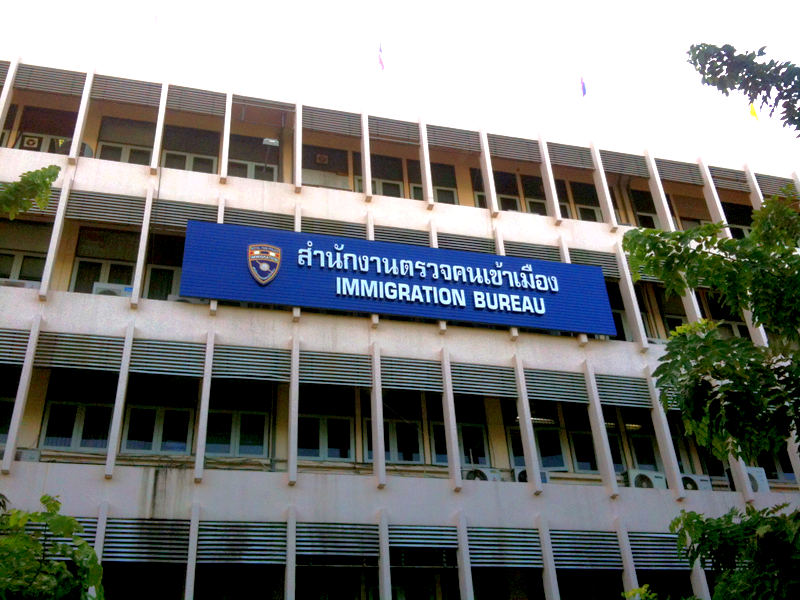
For most of Thailand’s history, entry and exit into the kingdom was unsupervised. Many of the early settlers were Chinese. A 50-strong immigration department, as it was originally named, was established in 1927 and transferred to the Royal Thai Police in 1932. Although regular expansion occurred, particularly as mass air travel became a world feature, it was the 1979 immigration act which established the features of registering and controlling foreigners which are still dominant today.
The end of the seismic Vietnam war in 1975, with the collapse of American influence in Cambodia and Laos as well, created mass movement of refugees to Thailand (which had avoided close involvement) in the years that followed. The 1979 act toughened up visa regulations and insisted on knowing the whereabouts of foreigners during their stay. In fact, the origin of address registration and 90 days reporting was to track economic migrants from neighboring countries rather than the millions of leisure tourists who also became caught in the net.
The 1980s and 1990s witnessed an unparalleled boom in intercontinental air travel. Thai immigration authorities, under government instructions, consciously soft-pedalled visa restrictions by allowing long-stay foreigners to make repeat border-runs or in-out flights to renew or extend their visas. By 1991, one year visas and extensions of stay had appeared, whilst work-permit holders were no longer forced to fly to Penang and back every three months. Retirement visas were also permitted, although the minimum age at first was 60 years and the money in a Thai bank was described as “any six figure sum”, or a minimum of 100,000 baht.
By the new millennium, restrictions were starting to appear. Government research suggested that there were millions of foreigners living in Thailand without the authorities knowing their whereabouts, their motivations or their income sources. Thai embassies abroad required more paperwork to issue visas and the number of border runs to Cambodia in particular was restricted, eventually to only two in a calendar year. Increasing numbers of foreigners found guilty of illegal working, criminal activity or visa irregularities were deported via the well-publicized and overcrowded immigration detention center.
New technology was the key to enabling the immigration bureau to keep a closer watch. United Nations agencies in particular donated computerized systems to strengthen air, sea and land monitoring to counter irregular migration and transnational crime. In 2014, the latest Verifier Travel Document and Bearer workstations were installed at Suvarnabhumi airport, later extended nationwide, which made passport fraud and migrant smuggling in particular risky enterprises indeed. Computerised liaison with Interpol has also smashed a number of pedophile networks, international forgery rings and terrorist groups.
At the present time, the government is promoting its visa plans for high-value tourists and expats. This concept is not actually new, as the affluent Elite card visa was introduced as early as 2003 although it has certainly had a checkered history. Contemporary initiatives include LTR (Long Term Resident) visas with the possibility of property purchases and flexible working regulations for executives and the well-heeled. The precise details have not yet appeared in the Royal Gazette.
The tourist ghost towns created by the pandemic have definitely affected immigration issues. Following the termination of Thailand Pass from July 1 2022, the 30 days visa-exempt discretion for nationals of around 60 countries has been extended to 45 days and the TM6 landing card bureaucracy has been suspended for air arrivals, though not for sea and land passengers. Requirements for medical insurance, both Covid and all purpose, have also disappeared for almost all visas or extensions, a reflection of similar decisions in force in Thailand’s competitor nations in the ASEAN region.
Thailand’s immigration service has grown from a tiny force in 1927 to a huge enterprise today which has a budget of over 350 million baht and a fleet of almost 300 vehicles and sea craft. There is currently speculation that Thailand is overdue for an overhaul to simplify the country’s complex visa system which has overlapping and even contradictory bureaucratic rules for similar target groups. The confusion is well documented every day on well-informed social media, especially Asean Now and its resident hosts. A particularly popular move would be to improve online registration of personal details because the immigration websites in question are prone to breakdown. After all, the most efficient immigration systems in the world are those you don’t have to visit too often.
 |
 |
 |





